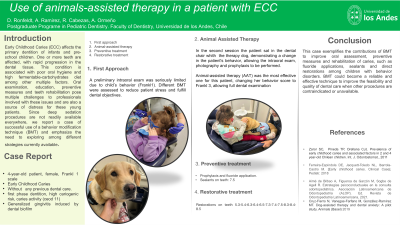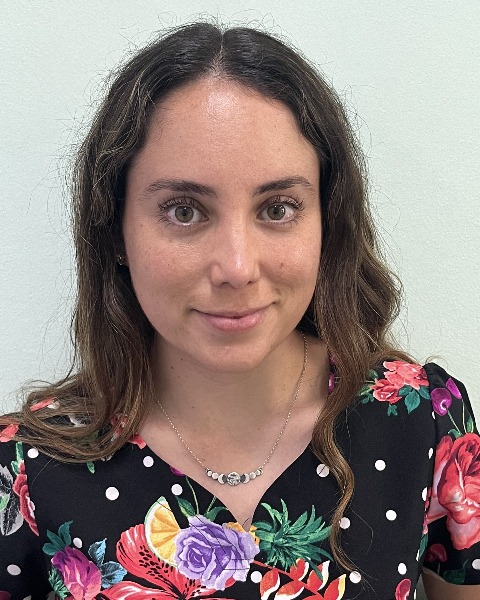Patient Management
393 - Use of animals-assisted therapy in a patient with ECC


Daniela I. Ronfeldt
student
Universidad de los Andes, Chile
Universidad de los Andes
Santiago, Region Metropolitana, Chile- AR
Andrea Ramírez, DMD
Universidad de los andes
- AO
Andrea Ormeño, -
Universidad de Los Andes
Santiago, Region Metropolitana, Chile - RC
Roxana Cabezas, -
Program Director
Universidad de Los Andes
Santiago, Region Metropolitana, Chile
Presenting Author(s)
Co-Author(s)
Research Mentor(s)
Program Director(s)
Early Childhood Caries (ECC) affects the primary dentition of infants and pre-school children. One or more teeth are affected, with rapid progression in the dental tissue. This condition is associated with poor oral hygiene and high fermentable-carbohydrates diet among other multiple factors. Oral examination, education, preventive measures and teeth rehabilitation pose multiple challenges to professionals involved with these issues and are also a source of distress for these young patients. Since deep sedation procedures are not readily available everywhere, we report a case of successful use of a behavior modification technique (BMT) and emphasize the need to exploring among different strategies currently available.
A 4-year-old female patient with ECC, was evaluated at the dental pediatric clinic. At this point, she had not received any previous dental care.
A preliminary intraoral exam was seriously limited due to child´s behavior (Frankl1). Different BMT were assessed to reduce patient stress and fulfill dental objectives. Among the tested techniques, animal-assisted therapy (AAT) was the most effective one for this patient, changing her behavior score to Frankl 3, allowing full dental examination, oral hygiene training, teeth rehabilitation and preventive procedures.
This case exemplifies the contributions of BMT to improve oral assessment, preventive measures and rehabilitation of caries, such as fluoride applications, sealants and direct restorations among children with behavior disorders. BMT could become a reliable and effective technique to improve the feasibility and quality of dental care when other procedures are contraindicated or unavailable.
Identify Supporting Agency and Grant Number:

.jpg)